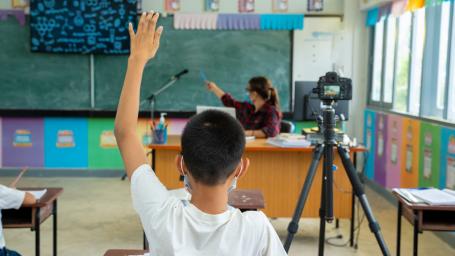Case
Racism Discussion
Lately, we have been talking about racism and antiracism in the classroom. What is a good way to start this conversation for young students such as Kindergarten- 3rd grade?
Solution #1
Top Solution
I would start by reflecting on if your classroom inspires inclusivity and diversity. Do you have children's books that represent a diverse group of cultures and races? Stories can expand knowledge and raise questions about what we learn from the perspectives of other people. I also need to figure out how to have these conversations in class. Reaching out to people in your community and finding resources to support your conversations might be a good place to start.
I really like this approach. I think trying to find a book would be a great way to start the discussion.
Solution #2
I believe the best way to bring up racism in primary grades is by reading a picture book discussing racism and/or sharing an animated video to the entire class. At this age, solely defining racism would not be that helpful or do any justice.
Solution #3
This article by edutopia outlines 5 strategies for implementing these kinds of activities and discussions. https://www.edutopia.org/blog/teaching-young-children-social-justice-jinnie-spiegler I agree with the #1 item which is using children's literature to spark discussion. There are so many books that reflect diverse backgrounds and experiences and that discuss bias/discrimination/inequalities/bullying that people have faced. Another point not mentioned in this article is continuing to educate and familiarize yourself with antiracist pedagogy so that it becomes easier to integrate antiracist practices into many of your lessons.
I agree on finding appropriate children’s literature because through reading and studying the feelings of diversity, the children will have feelings to reference. It allows them to first identify, understand, and accept their feelings.
Solution #4
Here is a huge list of anti-racism resources for K-12 educators provided by The Race Institute for K-12 Educators http://www.raceinstitute.org/anti-racist-resources-for-teachers.html
Solution #5
As other commenters have said, incorporating diverse literature into your classroom is essential. Providing students with picture books and other pieces of children's literature will be extremely beneficial in helping them learn and understand. Additionally, I would recommend having open conversations with them and taking the time to answer their questions.
Solution #6
One method I believe that I remember witnessing back in Elementary school, was this puppet going over racial stereotyping, where a puppet would be asking her other puppet friends, who were of a different race, what movies they rented from the video store and making guesses based upon their race, and then they would get offended or angry at her for making the assumptions.
It’s a cute little show, while also teaching students not to racial stereotype others.
Solution #7
I would start by exposing them to multicultural books. You could also talk about emotions and how words can effect each other. I would also try to find literature that can help start the conversation in a way that is going to be respectful of the students age and use words that they can relate to.
Having a talk with your students about what racism means to them might be a great pre assessment to the topic.
Solution #8
Reading a book or telling a story is the best way to get the students start to think about this topic
Solution #9
Providing students with multiple diverse representations via posters, books, and other media, allows students to be taught about cultures and people different from themselves. This is an indirect way to teach being antiracist. It also opens up the potential for discussions surrounding race from students asking questions.
Solution #10
I would find an age appropriate book to read to the class and branch into the topic from there
Solution #11
I think its important to communicate this in a way your students can understand. Get onto their level. You can make it personal by sharing stories or featuring a speaker, you can assign readings about racism, or even watch a film.
Solution #12
the best way to start that conversation is to ask what is their first image of race & color
